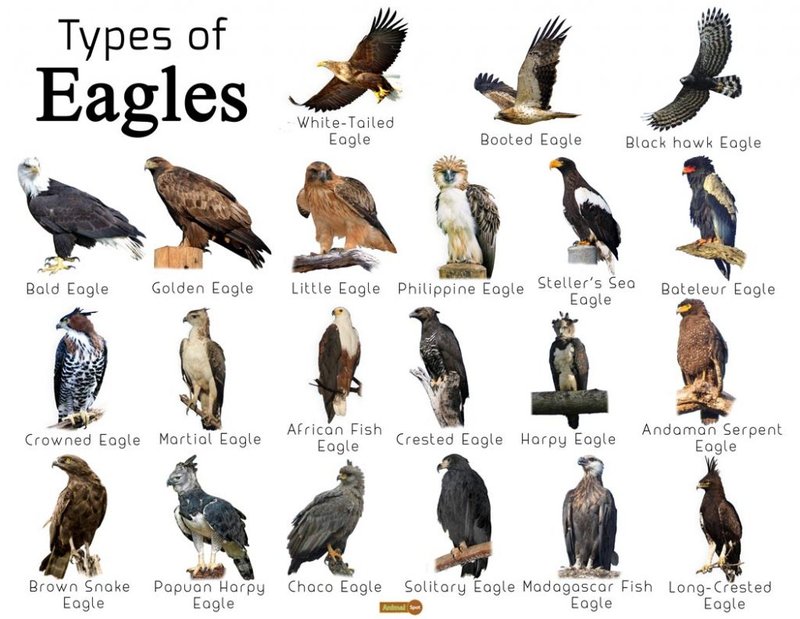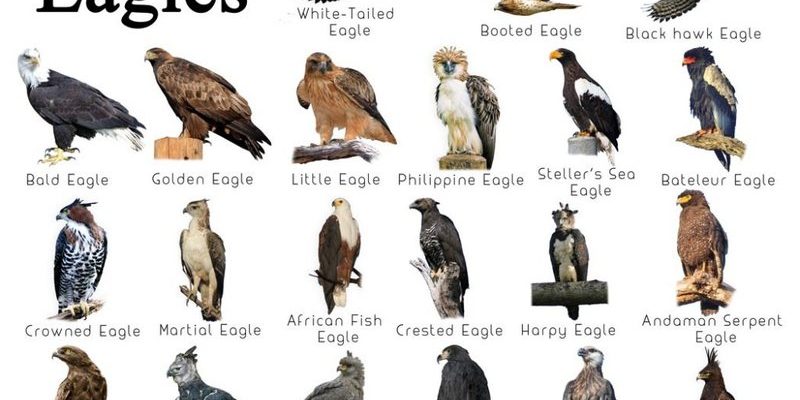
Imagine you’re wandering through a lush jungle, surrounded by the sounds of nature. Above you, the Harpy Eagle swoops down with its massive talons and striking feathers. But wait! You might spot a few other impressive birds in the vicinity, like the Black Hawk-Eagle or the Crested Caracara. Each bird has its own unique traits, but how can you tell them apart? That’s exactly what we’ll unravel in this article. We’ll explore the Harpy Eagle and how it stacks up against similar bird species, focusing on their key differences in size, appearance, behavior, and habitat.
What Is the Harpy Eagle?
First off, let’s get to know the Harpy Eagle a bit more intimately. This giant bird of prey, known scientifically as *Harpagornis harpyja*, is renowned for its impressive size. It can weigh up to 20 pounds and boasts a wingspan of up to 7 feet. To put that into perspective, imagine a small dog flying above your head—now that’s powerful!
The Harpy Eagle is mostly found in tropical rainforests, where it’s perfectly adapted to life in the canopy. Its strong legs and massive talons are designed for grabbing and lifting heavy prey, mainly sloths and monkeys. One striking feature of this eagle is its distinct crest of feathers on its head, which can make it look quite regal as it perches silently high above the ground.
Most of the time, you’ll find Harpy Eagles nesting in tall trees. They prefer areas that are rich in biodiversity, which provides them with plenty of food. Unfortunately, habitat loss poses a significant threat to their survival, making it all the more essential to appreciate and protect this extraordinary bird.
Comparing Size and Appearance
When you think of the Harpy Eagle, the first thing that probably comes to mind is its sheer size. But how does this compare to birds like the Black Hawk-Eagle or the Crested Caracara? Let’s break it down.
Harpy Eagle: As we mentioned, the Harpy Eagle can weigh between 6 to 10 kg (roughly 13 to 22 pounds). Its plumage is a striking mix of grey and black, while its chest features a striking white pattern. The distinctive crest gives it a unique silhouette that’s hard to miss.
Black Hawk-Eagle: This bird is slightly smaller, weighing in at about 3 to 4.5 kg (6.5 to 10 pounds). While it also sports a dark coloration, its wings and tail have reddish-brown hues that set it apart. The Black Hawk-Eagle’s talons are slightly smaller too, reflecting its preference for smaller prey like birds and reptiles.
Crested Caracara: A bit different in build, the Crested Caracara is larger than the Black Hawk-Eagle but smaller than the Harpy. It typically weighs around 2.5 to 4 kg (5.5 to 9 pounds). This bird has a striking facial pattern with a strong yellow-orange beak, making it an unmistakable sight.
So, if you’re trying to identify these birds, size and plumage are key—each offers a unique snapshot of nature’s artistry.
Habitat and Range
Understanding where these birds live can also help in distinguishing them. The Harpy Eagle has a specific habitat preference that shapes its lifestyle.
Harpy Eagle: They thrive in tropical rainforests, primarily in Central and South America. Their range extends from southern Mexico down to northern Argentina. These eagles prefer unspoiled habitats, rich in biodiversity.
Black Hawk-Eagle: This eagle is more versatile. It can be found in various habitats, including open woodlands and forests from southern Mexico to central South America. Unlike the Harpy, it doesn’t have the same strict requirement for dense, humid environments.
Crested Caracara: Now, this bird is quite adaptable, often seen in open areas like savannas and grasslands. It primarily inhabits North and South America, which allows it to thrive in a range of environments, from coastal regions to arid areas.
In short, while the Harpy Eagle loves the thick of the jungle, the Black Hawk-Eagle and Crested Caracara enjoy a broader range of habitats.
Diet and Hunting Techniques
Diet plays a crucial role in how these birds interact with their environment. Here’s what they typically eat and how they hunt.
Harpy Eagle: The Harpy Eagle has a diet primarily focused on arboreal mammals. Its powerful talons are designed to grasp and lift prey that weighs as much as it does, such as sloths and monkeys. They typically hunt by perching quietly and then launching a surprise attack, using their strength and speed to snatch up their meal mid-flight.
Black Hawk-Eagle: In contrast, the Black Hawk-Eagle is more of a generalist. While it also enjoys mammals, it has a taste for birds and reptiles too. This eagle uses a combination of stealth and agility, often hunting from a perch and swooping down on unsuspecting prey.
Crested Caracara: The Crested Caracara takes a different approach altogether. It’s primarily a scavenger, but it will hunt small animals when the opportunity arises. You’ll often see them walking around on the ground, foraging for food, or even chasing after carrion. Their adaptability in diet is one reason they thrive in a variety of habitats.
So, if you’re trying to catch a glimpse of these birds in action, consider their hunting techniques. The Harpy Eagle is all about raw power, while the Black Hawk-Eagle and Crested Caracara showcase more varied strategies.
Mating Behavior and Nesting
Birds have fascinating mating rituals, and these three species are no exception. Each has its own unique approach to courtship and nesting.
Harpy Eagle: The Harpy Eagle forms strong pair bonds, often mating for life. During courtship, males will perform aerial displays, showcasing their strength and agility. They typically build large nests high up in trees, often reusing the same site for many years, adding more material as needed. This dedication to their nesting site underscores their commitment to their young.
Black Hawk-Eagle: This species also forms long-term pairs, but their courtship displays are less elaborate. They prefer to nest in tall trees, usually near water sources. They’re a bit more secretive than Harpy Eagles, often nesting far from human activity.
Crested Caracara: The Crested Caracara has a different strategy altogether. While they may mate for life, their nests are often found in open areas, like on cliffs or even man-made structures. Courtship displays can include a lot of vocalizations and ground displays, which can be quite entertaining to observe.
In every case, nesting and mating behaviors reflect their adaptability and survival strategies, showcasing the incredible diversity of avian life.
Conservation Status and Threats
With all these incredible traits, it’s essential to consider the conservation status of these birds. They each face unique threats in their environments.
Harpy Eagle: Sadly, the Harpy Eagle is listed as near threatened. Deforestation is their primary threat, as it destroys their habitat and food sources. Additionally, hunting and human interference can have devastating effects on their population.
Black Hawk-Eagle: This eagle is currently listed as least concern, primarily because of its adaptability and ability to thrive in a range of environments. However, habitat loss still poses a risk, especially in areas where logging or development takes place.
Crested Caracara: The Crested Caracara has a relatively stable population and is also listed as least concern. Their adaptability gives them an edge, but local threats like poisoning and habitat destruction can impact them.
Understanding these conservation statuses can help raise awareness about the importance of protecting these majestic birds and their habitats, ensuring future generations can enjoy their beauty.
The Harpy Eagle is truly a breathtaking bird that commands attention and respect. Understanding its unique traits and how it compares to similar bird species, like the Black Hawk-Eagle and Crested Caracara, helps us appreciate the incredible diversity of our planet’s avian life. Each bird has its own fascinating adaptations that allow it to thrive in its environment.
By learning about these differences, we can better advocate for their conservation and ensure that these magnificent creatures continue to soar through the skies for generations to come. So, next time you’re out in nature, keep an eye on the sky—you never know when a Harpy Eagle or one of its relatives might just make an appearance!

